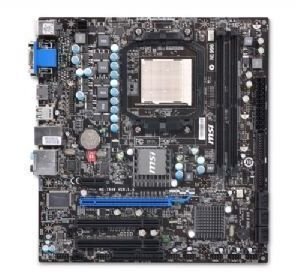Tips on Motherboard Replacement: A Walkthrough of What Needs to Be Done
There will always come a time when a component needs to be replaced on a desktop computer and a motherboard is no exception. New boards come out with better onboard graphics, sounds, and capabilities that may not exist on a current user’s motherboard. But replacing a motherboard, especially by yourself, involves research and a careful and stress free environment.
The Research
The first steps in a motherboard replacement is actually research. Why? Well, you can’t just throw what you currently have onto a new motherboard. There are many things to consider when replacing a motherboard - like motherboard form, processor manufacturer and type, video slots, onboard capabilities, etc.
First, you need to find out what your current motherboard is. There are a few ways to do this, from third party programs to taking a look inside the case. This article describes identifying your motherboard steps and how to do them. The main things you are looking for are - processor socket type, front bus speed, and cache size. These are important as they control how fast your computer will be and how many applications you can having running at the same time.
You will also need to know the form of the motherboard. The form basically means what type of computer case they fit into. Depending on the type of case, the motherboard is probably either be a standard ATX or a Micro ATX. You can usually find this information on the manufacturer’s website, as well as other information about your motherboard.
Once you have figured out what kind of motherboard you currently have, you must then figure out what type of motherboard you want and how it will work along side current components like video, sound, and network cards. Newer motherboards will often have PCI or PCIe slots for component cards. This is an important fact to pay attention to. For examples, if you find that your graphics card needs to be in an AGP slot on your current motherboard, you may need to either find a motherboard with AGP card support or buy another video card.
In a case where money may be tight, you might want to look into onboard capabilities. Many motherboards offer video, sound, and networking on the board itself (onboard), with some have the newest video and sound components from manufacturers like nVidia and Creative Labs SoundBlaster. Certainly if these components are better than what you currently have, go with a board with these capabilities. This solution is good if you plan on getting a new card in the future.
Installation & Aftermath
While doing the research for a new motherboard, you should also consider how you will install the motherboard. If you’re technically inclined, you can install the motherboard yourself. Here are some installation tips on how to do this.
If you don’t feel comfortable installing a motherboard yourself, you do have the option to take your computer into a local computer store to have a professional install it. Before you order a motherboard online, make sure that if you take your computer to a local professional, they allow parts purchased outside to be installed. Some stores may want you to buy a motherboard from them in order for them to do an installation.
If you have friends that are technically minded, ask if they can help you choose and install the motherboard for you.
Once you have your motherboard ordered, now is the time to start backing up your current computer. The reason for this is, other than always good practice for not losing any data; when you install a new motherboard, you will need to reformat your hard drive. This is so your hard drive recognizes the motherboard, components, and drivers. When you’ve completed the backup, you will need to gather any program discs you need, including the operating system disc. Make sure to keep them near your computer or desk, so that when your motherboard comes in, you have everything you need in arm’s reach.
Image content - MSI motherboard via Tiger Direct
